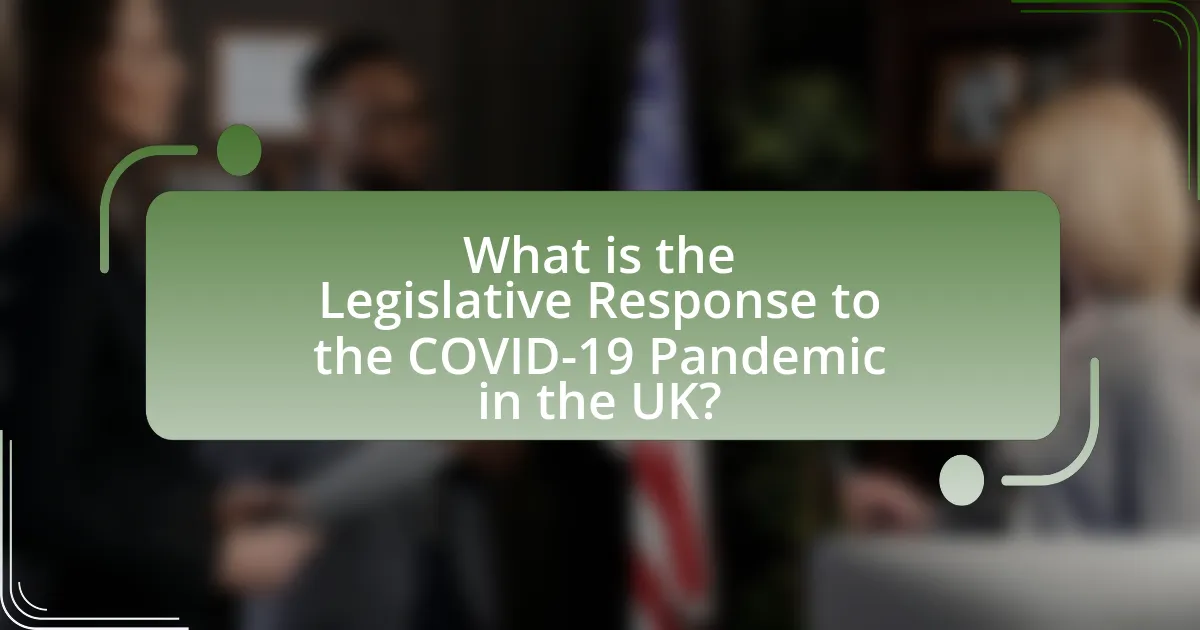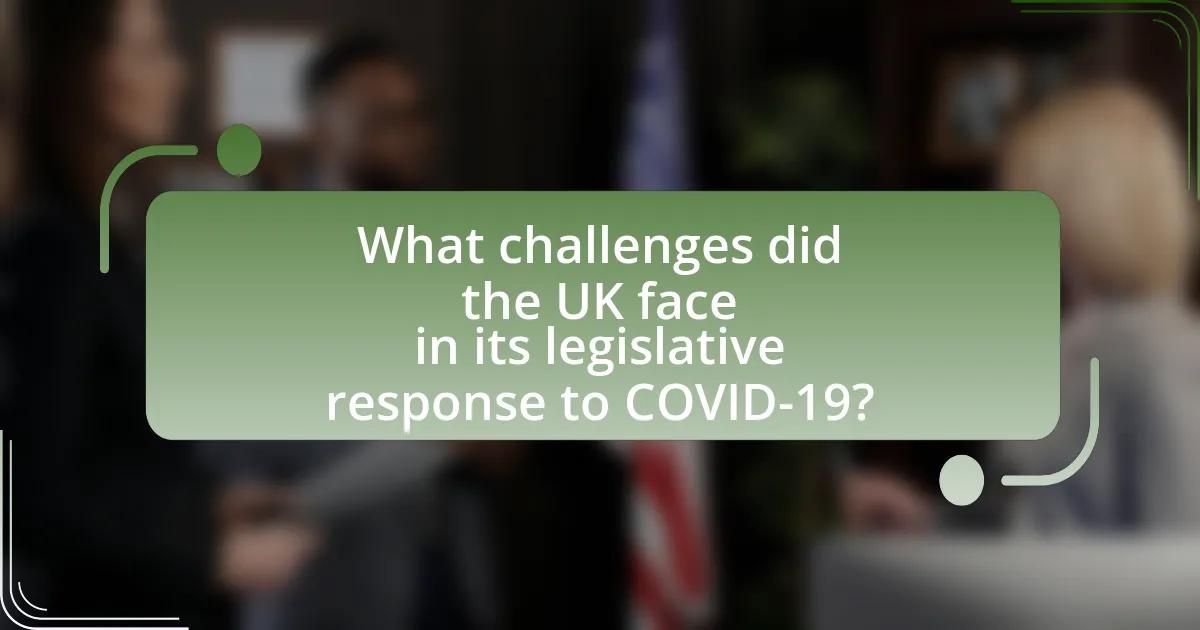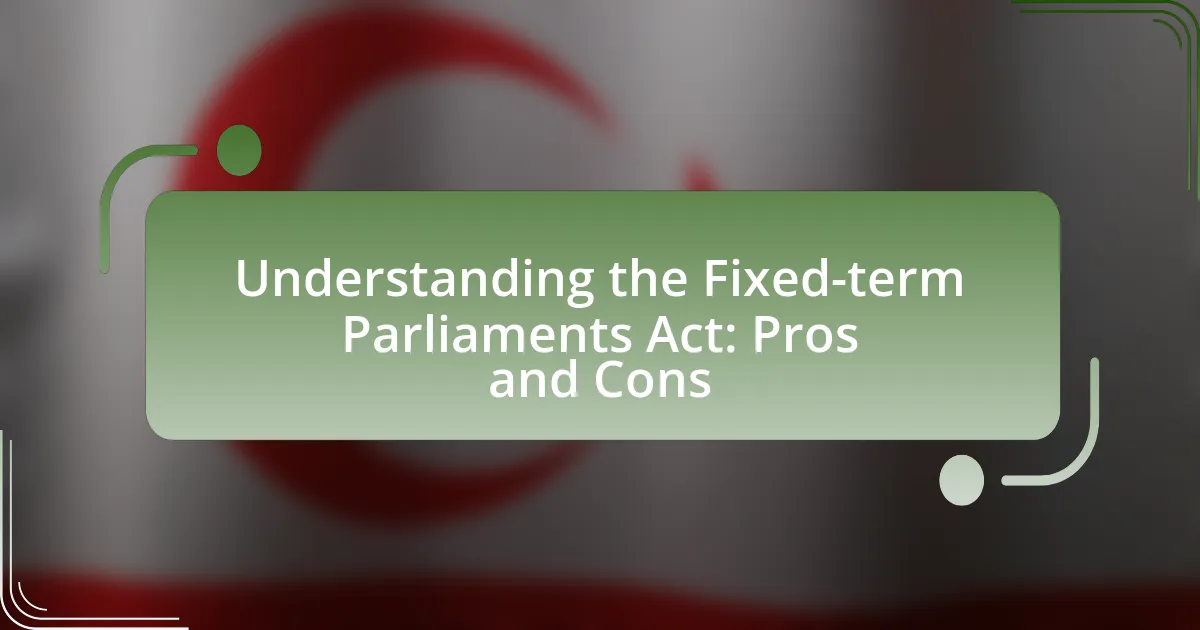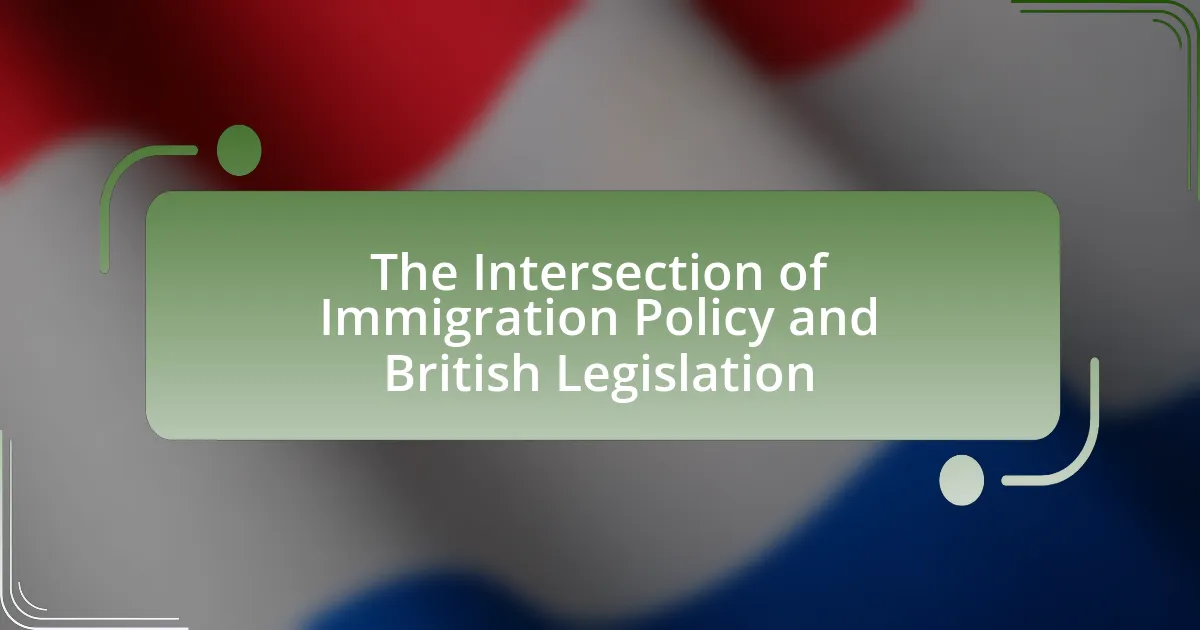The article analyzes the legislative response to the COVID-19 pandemic in the UK, focusing on the enactment of the Coronavirus Act 2020 and its implications for public health and economic stability. It details how the UK government utilized emergency powers to implement measures such as lockdowns, school closures, and financial support packages like the Coronavirus Job Retention Scheme. The article also examines the role of Parliament in shaping these laws, the challenges faced during the legislative process, and the impact of these measures on society and the economy. Additionally, it highlights lessons learned and best practices for future legislative responses to public health crises.

What is the Legislative Response to the COVID-19 Pandemic in the UK?
The legislative response to the COVID-19 pandemic in the UK primarily involved the enactment of the Coronavirus Act 2020, which provided the government with emergency powers to manage the crisis. This Act enabled the government to implement measures such as the closure of schools, restrictions on gatherings, and the ability to close businesses to protect public health. Additionally, the UK government introduced various financial support packages, including the Coronavirus Job Retention Scheme, which aimed to support businesses and employees affected by the pandemic. These legislative actions were crucial in enabling a swift response to the public health emergency and mitigating the impact of the virus on society and the economy.
How did the UK government initially respond to the COVID-19 pandemic through legislation?
The UK government initially responded to the COVID-19 pandemic through the enactment of the Coronavirus Act 2020, which was passed on March 25, 2020. This legislation granted the government extensive powers to manage the public health crisis, including the ability to close schools, cancel events, and impose restrictions on movement. The act aimed to enhance the capacity of the National Health Service (NHS) and ensure the availability of essential services during the pandemic. Additionally, it allowed for the temporary modification of various laws to facilitate a rapid response to the evolving situation, reflecting the urgency of the public health emergency.
What key laws were enacted during the early stages of the pandemic?
The key laws enacted during the early stages of the pandemic in the UK include the Coronavirus Act 2020, which provided the government with emergency powers to manage the crisis, and the Health Protection (Coronavirus, Restrictions) (Self-Isolation) (England) Regulations 2020, which mandated self-isolation for individuals who tested positive for COVID-19. The Coronavirus Act 2020 was passed on March 25, 2020, and it allowed for measures such as the closure of schools, the cancellation of events, and the ability to close public places to control the spread of the virus. The Health Protection Regulations were introduced to enforce self-isolation, ensuring compliance to mitigate transmission. These laws were critical in shaping the UK’s response to the pandemic and were supported by the need for rapid legislative action to protect public health.
How did these laws aim to address public health concerns?
These laws aimed to address public health concerns by implementing measures to control the spread of COVID-19, protect healthcare systems, and safeguard vulnerable populations. For instance, the Coronavirus Act 2020 granted authorities the power to impose lockdowns, enforce social distancing, and manage resources effectively, which was crucial in reducing transmission rates. Additionally, the Health Protection (Coronavirus, Restrictions) (Self-Isolation) (England) Regulations 2020 mandated self-isolation for individuals who tested positive, thereby minimizing the risk of further outbreaks. These legislative actions were supported by data indicating that timely interventions could significantly lower infection rates and prevent healthcare system overload.
What role did Parliament play in shaping the legislative response?
Parliament played a crucial role in shaping the legislative response to the COVID-19 pandemic in the UK by scrutinizing government proposals and enacting emergency legislation. Specifically, Parliament passed the Coronavirus Act 2020, which granted the government extensive powers to manage the public health crisis, including the ability to impose lockdowns and manage healthcare resources. This legislative process involved debates and amendments that reflected the concerns of various stakeholders, ensuring that the response was not solely dictated by the executive branch. The involvement of Parliament also included oversight mechanisms to hold the government accountable for its actions during the pandemic, thereby reinforcing democratic principles in crisis management.
How did parliamentary procedures adapt to the pandemic situation?
Parliamentary procedures adapted to the pandemic situation by implementing remote participation and digital voting systems. The UK Parliament introduced virtual sessions, allowing Members of Parliament (MPs) to attend debates and committee meetings via video conferencing platforms, which ensured legislative continuity while adhering to social distancing guidelines. This adaptation was formalized through the Temporary Provisions of the House of Commons and House of Lords, enabling remote voting and participation in debates, which was crucial during the peak of COVID-19 restrictions. The successful implementation of these measures demonstrated the ability of parliamentary systems to evolve in response to unprecedented challenges, ensuring that legislative functions could continue despite physical limitations.
What debates and discussions occurred regarding the legislative measures?
Debates and discussions regarding the legislative measures in the UK during the COVID-19 pandemic primarily centered on the balance between public health and civil liberties. Lawmakers and public health officials engaged in extensive dialogue about the necessity and effectiveness of lockdowns, social distancing mandates, and the enforcement of health regulations. Critics argued that some measures infringed on individual freedoms and disproportionately affected vulnerable populations, while proponents emphasized the need for swift action to prevent overwhelming the healthcare system. Specific discussions included the implications of the Coronavirus Act 2020, which granted the government extensive powers, leading to concerns about accountability and oversight. These debates were informed by data on infection rates, healthcare capacity, and economic impacts, highlighting the complex interplay between health policy and societal values.
What were the main objectives of the legislative measures implemented?
The main objectives of the legislative measures implemented in response to the COVID-19 pandemic in the UK were to protect public health, support the economy, and ensure the continuity of essential services. These measures aimed to mitigate the spread of the virus through lockdowns, social distancing regulations, and health guidelines, while also providing financial assistance to individuals and businesses affected by the pandemic. For instance, the Coronavirus Job Retention Scheme was introduced to prevent mass unemployment, demonstrating the government’s commitment to economic stability during the crisis.
How did the legislation aim to support public health and safety?
The legislation aimed to support public health and safety by implementing measures to control the spread of COVID-19 and protect healthcare resources. Specific actions included mandating social distancing, enforcing lockdowns, and facilitating the rapid deployment of vaccines. These measures were designed to reduce transmission rates and prevent healthcare systems from becoming overwhelmed, as evidenced by the significant decrease in infection rates following the introduction of these policies.
What economic measures were included in the legislative response?
The economic measures included in the legislative response to the COVID-19 pandemic in the UK were primarily the Coronavirus Job Retention Scheme, self-employment income support scheme, and various financial support packages for businesses. The Coronavirus Job Retention Scheme, launched in March 2020, allowed employers to furlough employees, covering up to 80% of their wages, which aimed to prevent mass unemployment. The self-employment income support scheme provided grants to self-employed individuals, offering up to £7,500 to help sustain their income during the crisis. Additionally, the government introduced loan schemes, such as the Bounce Back Loan Scheme, which provided businesses with loans of up to £50,000, and grants for small businesses to help mitigate the economic impact of the pandemic. These measures collectively aimed to stabilize the economy and support both individuals and businesses during the unprecedented crisis.

What challenges did the UK face in its legislative response to COVID-19?
The UK faced significant challenges in its legislative response to COVID-19, primarily due to the rapid pace of the pandemic and the need for urgent decision-making. The government had to balance public health concerns with economic impacts, leading to contentious debates over lockdown measures and restrictions. Additionally, the legislative process was hindered by the need for swift action, which sometimes resulted in inadequate scrutiny of laws, such as the Coronavirus Act 2020, which granted extensive powers to the government. This act faced criticism for potentially undermining civil liberties and lacking sufficient oversight mechanisms. Furthermore, the evolving nature of the virus necessitated frequent updates to legislation, complicating the legal landscape and creating confusion among the public and businesses.
How did the urgency of the pandemic affect the legislative process?
The urgency of the pandemic significantly accelerated the legislative process in the UK, leading to rapid enactment of emergency laws. The government introduced the Coronavirus Act 2020 within a matter of days, granting extensive powers to manage the public health crisis. This expedited approach was necessitated by the immediate need to address health care demands, economic support, and public safety measures, reflecting a shift from traditional legislative timelines to a more urgent, streamlined process. The necessity for swift action was underscored by the unprecedented nature of the crisis, which required lawmakers to prioritize public health and safety over standard procedural deliberations.
What criticisms arose regarding the speed of legislative changes?
Criticisms regarding the speed of legislative changes during the COVID-19 pandemic in the UK primarily focused on the lack of thorough scrutiny and consultation. Critics argued that the rapid pace of enacting laws, such as the Coronavirus Act 2020, limited parliamentary debate and public input, raising concerns about the potential for overreach and inadequate safeguards. For instance, the Act was passed in just a few days, which some lawmakers and civil liberties groups claimed undermined democratic processes and accountability.
How did the government balance speed with thoroughness in legislation?
The government balanced speed with thoroughness in legislation by implementing emergency measures that expedited the legislative process while ensuring essential scrutiny and oversight. For instance, the UK Parliament utilized virtual sessions and fast-tracked bills, such as the Coronavirus Act 2020, which was passed in just a few days to address urgent public health needs. This approach allowed for rapid response to the pandemic while maintaining checks through parliamentary committees and debates, ensuring that critical provisions were debated and amended as necessary.
What legal challenges emerged as a result of the new legislation?
The new legislation in the UK related to the COVID-19 pandemic led to several legal challenges, primarily concerning the balance between public health measures and individual rights. One significant challenge arose from the enforcement of lockdown measures, which prompted legal scrutiny regarding their compatibility with human rights laws, particularly the right to freedom of movement and assembly. Additionally, the legislation faced challenges related to the adequacy of parliamentary oversight, as critics argued that emergency powers granted to the government lacked sufficient checks and balances, potentially leading to abuses of power. These legal disputes highlighted tensions between the necessity of swift governmental action in a public health crisis and the protection of civil liberties, underscoring the complexities of legislative responses during emergencies.
How did courts respond to challenges against COVID-19 related laws?
Courts in the UK generally upheld COVID-19 related laws, affirming the government’s authority to implement measures aimed at public health. For instance, in the case of R (on the application of A) v. Secretary of State for Health and Social Care, the High Court ruled that the government’s lockdown measures were lawful and necessary to protect public health. This decision reflected a broader judicial trend where courts prioritized public safety and the government’s responsibility during the pandemic, often deferring to expert advice and scientific evidence in their rulings.
What implications did these legal challenges have on future legislation?
Legal challenges during the COVID-19 pandemic in the UK significantly influenced future legislation by highlighting the need for clearer legal frameworks and accountability measures. These challenges exposed gaps in existing laws, prompting lawmakers to consider reforms that enhance transparency and public engagement in emergency decision-making processes. For instance, the judicial review of government actions led to increased scrutiny of executive powers, resulting in legislative proposals aimed at ensuring that future emergency measures are subject to more rigorous oversight. This shift is evidenced by the introduction of the Public Health (Control of Disease) Act amendments, which sought to clarify the scope and limitations of governmental authority during public health crises.

What has been the impact of the legislative response on society and the economy?
The legislative response to the COVID-19 pandemic in the UK has significantly impacted both society and the economy by implementing measures that aimed to protect public health and stabilize economic activity. For instance, the introduction of the Coronavirus Job Retention Scheme (CJRS) helped preserve millions of jobs, with approximately 9.6 million workers furloughed at its peak, preventing a more severe unemployment crisis. Additionally, financial support packages, including grants and loans for businesses, injected over £350 billion into the economy, aiding in the survival of many enterprises during lockdowns. Socially, measures such as lockdowns and social distancing altered daily life, leading to increased reliance on digital communication and remote work, which has reshaped societal interactions and work environments. These legislative actions have had lasting effects, influencing economic recovery trajectories and societal norms in the post-pandemic landscape.
How did the legislation affect public health outcomes in the UK?
The legislation significantly improved public health outcomes in the UK by implementing measures that reduced COVID-19 transmission rates. For instance, the introduction of lockdowns and social distancing regulations led to a decrease in infection rates, as evidenced by a reduction in the R number, which fell below 1 during peak enforcement periods. Additionally, the rollout of the vaccination program, supported by legislative frameworks, resulted in over 80% of adults receiving at least one vaccine dose by mid-2021, contributing to a decline in severe cases and hospitalizations. These legislative actions directly correlated with improved public health metrics, demonstrating their effectiveness in managing the pandemic’s impact.
What metrics were used to evaluate the effectiveness of the laws?
The metrics used to evaluate the effectiveness of the laws in response to the COVID-19 pandemic in the UK included infection rates, hospitalization rates, mortality rates, and compliance levels with public health guidelines. These metrics provided quantitative data to assess how well the laws were controlling the spread of the virus and protecting public health. For instance, a decrease in infection rates following the implementation of specific laws indicated their effectiveness, while high compliance levels suggested public adherence to the regulations.
How did public compliance with the laws influence health outcomes?
Public compliance with laws during the COVID-19 pandemic significantly influenced health outcomes by reducing transmission rates of the virus. High levels of adherence to regulations such as social distancing, mask-wearing, and lockdown measures led to a decrease in COVID-19 cases and hospitalizations. For instance, a study published in the journal “Health Affairs” indicated that states in the U.S. with stricter compliance measures experienced lower infection rates, demonstrating a direct correlation between public adherence to health laws and improved health outcomes. In the UK, compliance with government mandates was crucial in managing the spread of the virus, ultimately contributing to lower mortality rates and a more effective public health response.
What economic impacts resulted from the legislative measures?
The economic impacts resulting from the legislative measures in response to the COVID-19 pandemic in the UK included a significant increase in government spending, which reached approximately £400 billion to support businesses and individuals. This spending aimed to mitigate the economic downturn caused by lockdowns and restrictions, leading to a temporary stabilization of the economy. Additionally, the measures resulted in a sharp rise in public debt, projected to exceed 100% of GDP, as the government borrowed extensively to finance its support programs. The unemployment rate initially surged but was partially offset by the furlough scheme, which protected millions of jobs. Overall, these legislative measures had profound effects on fiscal policy, labor markets, and economic growth trajectories in the UK.
How did financial support measures affect businesses and individuals?
Financial support measures significantly aided businesses and individuals during the COVID-19 pandemic in the UK by providing essential liquidity and stabilizing the economy. For instance, the Coronavirus Job Retention Scheme (CJRS) allowed employers to furlough employees, covering up to 80% of wages, which helped retain approximately 9.6 million jobs by October 2020. Additionally, the Self-Employment Income Support Scheme (SEISS) provided grants to 2.7 million self-employed individuals, ensuring they could sustain their livelihoods despite reduced income. These measures collectively contributed to a decrease in unemployment rates and supported consumer spending, which was crucial for economic recovery.
What long-term economic consequences are anticipated from these laws?
The long-term economic consequences anticipated from the laws enacted in response to the COVID-19 pandemic in the UK include increased public debt, potential inflation, and shifts in labor market dynamics. The UK government implemented extensive fiscal measures, such as the Coronavirus Job Retention Scheme, which led to a significant rise in national debt, projected to exceed 100% of GDP. This elevated debt level may result in higher taxes or reduced public spending in the future, impacting economic growth. Additionally, the influx of liquidity into the economy could contribute to inflationary pressures, as seen in historical instances following large-scale government spending. Furthermore, the pandemic has accelerated trends like remote work and digital transformation, which may permanently alter labor market structures and productivity levels.
What lessons can be learned from the legislative response to the COVID-19 pandemic?
The legislative response to the COVID-19 pandemic highlights the importance of rapid decision-making and flexibility in governance. Governments that swiftly enacted emergency legislation, such as the Coronavirus Act 2020 in the UK, were able to implement necessary public health measures effectively. This act provided authorities with the powers to manage the crisis, including the ability to close schools and enforce lockdowns, demonstrating that timely legislative action can significantly impact public health outcomes. Additionally, the pandemic underscored the necessity for clear communication and transparency in legislative processes, as public trust is crucial during emergencies. The experience also revealed the need for preparedness in terms of legal frameworks to address future health crises, emphasizing that proactive planning can enhance resilience against similar challenges.
How can future legislation be improved based on this experience?
Future legislation can be improved by incorporating more robust mechanisms for rapid response and adaptability in public health crises. The COVID-19 pandemic highlighted the need for legislation that allows for swift action in emergencies, such as streamlined processes for enacting health measures and clearer guidelines for resource allocation. For instance, the UK’s initial response faced delays due to bureaucratic hurdles, which could be mitigated by establishing predefined emergency protocols that can be activated quickly. Additionally, enhancing transparency and public engagement in the legislative process can foster trust and compliance, as seen in successful communication strategies during the pandemic. Implementing these improvements can lead to more effective and timely legislative responses in future public health emergencies.
What best practices emerged from the UK’s legislative response?
The best practices that emerged from the UK’s legislative response to the COVID-19 pandemic include rapid legislative adaptation, enhanced collaboration between government and health authorities, and the implementation of clear communication strategies. Rapid legislative adaptation was evident in the swift passage of the Coronavirus Act 2020, which provided the government with necessary powers to respond effectively to the crisis. Enhanced collaboration was demonstrated through the establishment of the COVID-19 Taskforce, which facilitated coordination among various sectors, ensuring a unified response. Clear communication strategies were vital, as evidenced by regular updates from government officials and public health experts, which helped maintain public trust and compliance with health guidelines. These practices contributed to a more effective and responsive legislative framework during the pandemic.




